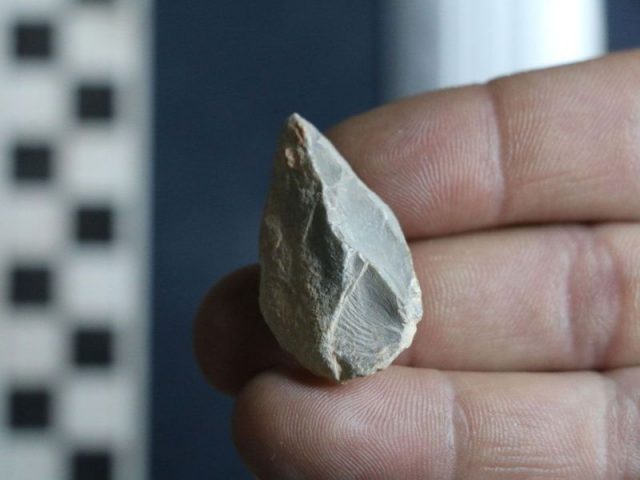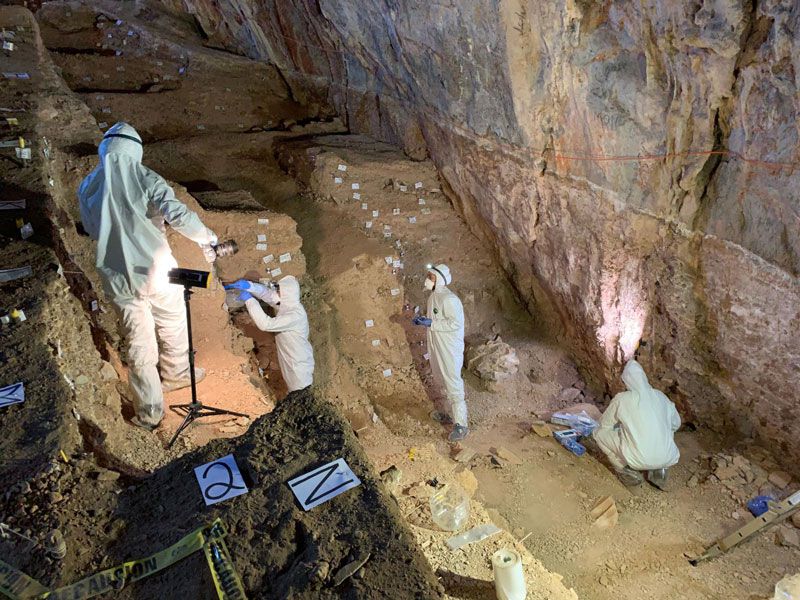Americas: Archaeologists live for evidence, the kind of concrete, absolute evidence that proves theories and gives them solid reasons for believing one set of ideas over another.
But often, they must live with less than firm evidence of a theory or hypothesis, because there is only a limited amount of proof of previous times extant in the earth.
An Egyptian tomb, for example, may contain a mummy, but little else to confirm just who the remains are. For that knowledge, archaeologists must rely on their schooling, and the lessons of those who excavated sites before them.
But sometimes, even the smallest object can constitute profound evidence to a scientist or archaeologist, and that may be the case with a discovery made deep within a cave in Mexico, the Chiquihuite Cave, located high in the Astillero Mountains.

Almost 2,000 artifacts were found during an excavation at the site in 2016 and 2017. These stone objects may have been used as tools for tasks like chopping and cutting, or even as early weapons.
What is relevant is not just the existence of the many items, but when they were disposed of there, which could prove a new theory that man arrived in the Americas much earlier than previously believed.
The archaeologist involved in the new study, Ciprian Ardelean of the Autonomous University of Zacatecas, has postulated that these
, not 13,000 years ago, which is the assumed time line based on evidence collected at various sites across North America thus far.
If Ardelean is correct, and if he can gather enough evidence to validate his theory, it will profoundly alter what science, history and archaeology have collectively postulated about man’s evolution in the Americas for decades.
Ardelean readily acknowledged in a recent media interview that his theory is not yet proven, and his colleagues may be reluctant to agree with his conclusions.
“This site alone can’t be considered a definitive conclusion,” Ardelean said recently. However, he argued, when the find at Chiquihuite Cave is added to other finds in North America, like those at Bluefish Cave in the Yukon and Gault in Texas, his theories become more compelling.
Ardelean and his colleagues at the university have published a scholarly paper online, outlining their findings and explaining their hypothesis.

Ardelean added during the interview that, when taken with other evidence gathered over the years, “it’s strong enough to favour a valid hypothesis that there were humans here before, and almost certainly during, the Last Glacial Maximum.” That refers to the time period when sheets of ice still covered vast amounts of the Earth’s surface.
Whenever it was that man arrived, the path he took is not in dispute; he crossed the Beringia land bridge and made his way from Siberia, though it took centuries, experts say.
Could he have done so when so much ice remained over the Americas? That is still in question, but Ardelean’s new evidence adds yet more information – and intrigue – to the theories.
Still, other archaeologists have expressed doubt about the validity of Ardelean’s findings, noting, for example, that all the relics found in the cave appear to have been fashioned from a single hit, almost as if they are simply stones that have fallen from the cave’s “ceiling,” and not man made tools.
Nor are there findings that confirm people lived in the cave – no evidence of domesticity, so to speak – which is unusual considering it is so far up in a mountain range.
Another Article From Us: ‘Oh my God, something’s in there!’ Pyramid discovery exposed by archaeologist
Nonetheless, Ardelean is convinced his theory has merit, and is continuing to collect and examine the stone objects, hoping he can find more proof that will convince his colleagues around the world that man came to Mexico sooner than anyone previously believed.
